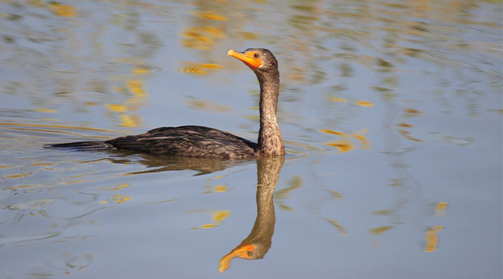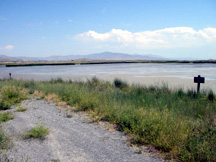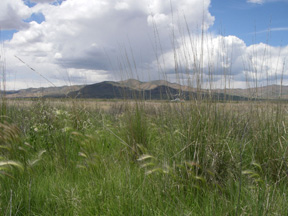Habitat Quality Index Methods Development
Habitat Quality Index Methods Development
 Currently there is no standardized method of assessing avian specific habitat quality within the Great Salt Lake ecosystem. The objective of this study, which BIO-WEST is conducting with grant funding from the Utah Department of Transportation, is to develop a quickly and easily applied method of assessing habitat quality using structural and floristic requirements specific to avian communities. This assessment tool will apply to four broadly classified habitat types: emergent marsh, grassland/shrubland, playa, and wet meadow.
Currently there is no standardized method of assessing avian specific habitat quality within the Great Salt Lake ecosystem. The objective of this study, which BIO-WEST is conducting with grant funding from the Utah Department of Transportation, is to develop a quickly and easily applied method of assessing habitat quality using structural and floristic requirements specific to avian communities. This assessment tool will apply to four broadly classified habitat types: emergent marsh, grassland/shrubland, playa, and wet meadow.
 The Habitat Quality Index (HQI) method contributes to goals, objectives, and recommendations found in applicable bird conservation plans by providing a standardized method of assessing habitat quality that is specific to avian communities in a variety of habitat types. This method accounts for important avian habitat characteristics, including abiotic and biotic structural and floristic requirements, that have been identified as primary components of quality avian habitat.
The Habitat Quality Index (HQI) method contributes to goals, objectives, and recommendations found in applicable bird conservation plans by providing a standardized method of assessing habitat quality that is specific to avian communities in a variety of habitat types. This method accounts for important avian habitat characteristics, including abiotic and biotic structural and floristic requirements, that have been identified as primary components of quality avian habitat.
 All study sites are located within the Great Salt Lake ecosystem, a site of hemispheric importance. This project will provide a tool for estimating existing habitat suitability, success of restoration/enhancement, and the effects of recreation on managed lands that are significant to a variety of avian communities. The tool will guide future Federal, State, local government, non-profit, and private land management decisions to lessen impacts to neotropical migrant species and their habitat through a coordinated private and State effort. The HQI method can be an effective component of adaptive management plans. By using habitat quality as a measure of success, the method would allow land managers to gauge the effectiveness of restoration/enhancement efforts by establishing habitat quality benchmarks over time. Changes to restoration efforts can be made if established habitat quality benchmarks have not been achieved. The standardized HQI method would also permit land managers to quickly and easily assess the impacts of recreation on habitat quality within the boundaries of State and Federally managed lands.
All study sites are located within the Great Salt Lake ecosystem, a site of hemispheric importance. This project will provide a tool for estimating existing habitat suitability, success of restoration/enhancement, and the effects of recreation on managed lands that are significant to a variety of avian communities. The tool will guide future Federal, State, local government, non-profit, and private land management decisions to lessen impacts to neotropical migrant species and their habitat through a coordinated private and State effort. The HQI method can be an effective component of adaptive management plans. By using habitat quality as a measure of success, the method would allow land managers to gauge the effectiveness of restoration/enhancement efforts by establishing habitat quality benchmarks over time. Changes to restoration efforts can be made if established habitat quality benchmarks have not been achieved. The standardized HQI method would also permit land managers to quickly and easily assess the impacts of recreation on habitat quality within the boundaries of State and Federally managed lands.

